#Şehzade Ibrahim (Son of Kösem)
Text


This silver and black kaftan was first worn by as Şahin Giray in the first episode of the first season of Magnificent Century: Kösem. It was worn again by Şehzade Ibrahim (later Sultan Ibrahim) in the sixteenth episode of the second season.
#Muhteşem Yüzyıl: Kösem#Magnificent Century Kösem#Magnificent Century Kosem#period drama#costume drama#historical drama#Şahin Giray#Sahin Giray#Şehzade Ibrahim#Sehzade Ibrahim#Ibrahim I#Şehzade Ibrahim (Son of Kösem)#reused costumes#recycled costumes
4 notes
·
View notes
Text
Hümaşah - disambiguation
There are 3 Magnificent Century and Magnificent Century: Kösem characters named Hümaşah and there is 1 bonus historical figure who was left out of the series but would have been named Hümaşah.
Ayşe Hümaşah Sultan was the daughter of Mihrimah Sultan and Rüstem Paşa. She was the granddaughter of Sultan Süleyman and Hürrem Sultan.
Hümaşah Sultan was the daughter of Safiye Sultan and Sultan Murad III and the sister of Sultan Mehmet III. She was also the grand daughter of Sultan Selim II and Nurbanu Sultan and the great-granddaughter of Sultan Süleyman and Hürrem Sultan.
Telli Haseki Hümaşah Sultan was the wife of Sultan İbrahim and the mother of Şehzade Orhan. She was Kösem Sultan’s daughter-in-law.
The historical Şehzade Mehmet (the son of Süleyman and Hürrem) had a daughter named Hümaşah Sultan. When he died in the show, his favourite Cihan Hatun was pregnant with a child. We never see her again or the child. But it’s reasonable to assume that their child would have been Hümaşah Sultan.
#magnificent century#magnificent century: kösem#el sultán#kosem la sultana#muhteşem yüzyıl#muhteşem yüzyıl: kösem
10 notes
·
View notes
Photo




So now I just had some free time to upload the family trees of the sultan’s we already discussed.
Mehmed III’s family is less known than the others, thats why his whole family tree seems small compared to the others. We must know, that none of the daughters are surely from Halime or Handan. You can read about it longer in their portraits and than you will understand what I’m talking about. Here are the connecting portraits for this family tree:
Mehmed III, Halime, Handan, Mehmed III’s daughters, Ahmed I, Mustafa I
Ahmed I’s family is big and quite well documented. There are still questions of course as in any other sultan’s family. Here are the connecting portraits for this family tree:
Ahmed I, Mahfiruze, Kösem, Ahmed I’s daughters, Osman II, Murad IV, Ibrahim I, Ahmed I’s sons
Osman II died young and had a small family, though there are still questions about him: Its not sure he married Pertev Pasha’s granddaughter and its not sure that Mustafa and Zeynep were his children. Some says Mustafa and Zeynep both were Ahmed I’s children who died infancy. Plus we don’t know for 100% sure if Meylişah was the mother of Şehzade Ömer or Ayşe. So actually nearly nothing is sure in Osman’s family tree. *insert facepalm meme here* Here are the connecting portraits for this family tree:
Osman II, Osman II’s consorts
Murad IV had a big family, but we know quite little about his consorts and sons and sometimes the dates are not valid also. Here are the connecting portraits for this family tree:
Murad IV, Murad IV’s consorts, Murad IV’s daughters
#Mehmed III#handan sultan#halime sultan#Ahmed I#Mustafa I#mahfiruz hatun#mahfiruze sultan#Kösem sultan#Mahpeyker#mahpeyker kösem#şehzade kasim#sehzade bayezid#ibrahim I#Murad IV#Osman II#ayse sultan#fatma sultan#abide sultan#hanzade sultan#atike sultan#Meylisah sultan#şehzade ömer#akile hatun#Pertev Paşa#aya hatun#haseki ayse sultan#sanavber#esmehan kaya
50 notes
·
View notes
Note
Thanks for your answer on Kosem Sultan's exile. I am basically keen to know exactly when did she return to topkapi saray, her son's reign or her grandson's reign? and if possible please write her participation on Sultan Ibrahim's deposition in details. :)
Sorry, I forgot to add it in my last answer to you.
Kösem presumably came back to Topkapi for Ibrahim's deposition or shortly before. When the Janissaries asked for Şehzade Mehmed to be delivered to them so that he could be crowned sultan in the janissaries' mosque, Kösem answered that it couldn't be done:
“It is not customary to hold the accession ceremony of a new sultan in a mosque. Let them come to the palace."
The Janissaries, statesmen and members of the ulema arrived at the Second courtyard, where Kösem herself met them:
“On her head she wore a scarf trimmed with a double twisted silk thread, and she was wearing a jacket. The black eunuch was standing next to her with a fan." — Târih-i Na’îmâ
Kösem, though, thought that there was no need to cover herself, and she didn't. Firstly, the ulema and the ağa of the Janissaries bowed to her with their hands clasped. Kösem told them:
"Is such a struggle against the order of power wise? Wasn't every single one of you raised up through the benevolence of the Ottoman dynasty?"
The Şeyhülislam, Koca Muslihiddin, replied that:
Both me and all of us live here thanks to the virtues of this great state. However, the balance was disturbed due to the fact that our paddishah in his behavior and attitude exceeded the limits of reason. Since he got involved with bad people, the medicines didn't help him. On all sides, the unbelievers revolted. The enemies have seized all borders. On the Bosphorus, 70–80 warships fought day and night, blocking access to the Mediterranean Sea. And in the country, it seems that he did not pay attention to it at all. By squandering money, wasting, and accepting bribery, all rules have been broken. It was plunged into lawlessness and corruption. The treasury was squandered. What is the verdict of Koranic law has been decided by our ulema who issued fatwas and came here. Thanks be to God that the heir deserves him. The will not disperse until he is enthroned. If not, blood will be spilled and no one can be sure of anything. Please do not oppose this by creating confusion. The verdict according to the Sharia law is binding.
Kösem technically agreed with him but her role as valide sultan and mother of the reigning sultan was that she was supposed to seem at least dubious. For this reason, she told him:
For so long you have permitted whatever my son wished [and] proved your loyalty; [and] not once has any of you admonished him or not wished him well. Now you wish to reverse the situation and criticize such an innocent one. This is an evil act. [...] If you could come to an agreement and advise anything, we wouldn't be here. Is it not undermining this order to condemn people to vulnerability and insecurity? Tell me what needs to be done from now on. Let us rid of those who are eroding the state and let him still sit on the throne. The state and the lands should be managed by the ulema as his proxies, dividing the duties among themselves.
As Kumrular notes, Kösem's words seem inconsistent, considering that she wanted Ibrahim gone (mostly because she was afraid that he would take her life). At the same time, though, she was in an awful place because dethroning her son meant that she most likely would be going to the Old Palace, therefore relinquishing her power and influence to the new sultan's mother.
The dismissed judge of Anatolia, Hanefi Efendi, at this point employed a different strategy:
“My Sultan, we have come to you, trusting in your grace and in your respect and recognition of divine rights. Mother of all Muslims, you who unite the society, we ask you to make efforts as soon as possible to establish a government that will take care of the interests of the state. For the people, the situation is very bad. Our enemies have attacked us from all sides. "
For the first time, a valide sultan had been addressed not as the mother of the sultan but as the Mother of all Muslims. This is revolutionary. ummn al-mu'minin was a title bestowed on the Prophet's wives only. As Peirce states,
this accolade endowed Kösem with an identity that enabled her to extend her maternal role as mentor/guardian beyond her son and the dynasty to the empire, indeed to the whole Muslim community, and thus to sanction the deposition. Furthermore, it allowed her to mediate the two contending forces in the Ottoman polity: the sovereign authority of the dynasty and the law of Islam.
Hanefi Efendi continued:
“He offended the state many times. In addition to ruthless tax enforcement, murderers raided stores and plundered merchant goods. He obeyed the urging of women. Under their pressure and at their request, a rule of lawlessness lasted for a long time, which at that time crossed all borders. It cannot be fixed. The ruler will not redeem himself in any way. "
Kösem did not back down:
"You are right, but you have exposed the bad intentions of others. He listened to worthless people. From now on, let those friends be cast out, and let wise counsellors keep their post "
Hanefi Efendi too did not seem incline to give in:
“Then why were righteous people killed from among the ruler's closest people? Why, under the influence of temporary anger, did he order the death of such a vizier as Kara Mustafa Pasha? Or of the conqueror of Candia, Yusuf Pasha, saying, "Why didn't you bring me the spoils of Candia?" How would someone who witnessed this find the courage to try to come closer and give advice?”
Finally, the matter of Şehzade Mehmed was touched upon, which - according to Kumrular - was the least favourable possibility for Kösem: "How could a seven-year-old innocent ruler now reign?" To which, Hanefi Efendi, said:
“It is impossible for someone mentally disturbed to rule. But it is permissible for someone who is admittedly a little boy, but with full mental powers. [...] May the sultana not deign to look for other solutions and bring forth His Majesty the heir to the throne."
The debate lasted around two hours and at some point, Karaçelebizâde Abdülaziz Efendi interrupted Kösem with “words so sharp and emphatic that they were almost rude", according to Naima. "Kösem's reply at that time was thus noted: "And her Majesty the Sultan entered into a discussion on this matter and presented very brave views, not mentioning anything about a removal.""
This was the deposition as reported by Naima. Another chronicle, Tarih-i Gılmânî by Mehmet Halife, told the episode a little differently:
“The next day they came to the Bâb-ı Hümâyûn. And to the closest courtiers, the Great Valide herself (Kösem Sultan) came out and asked: "What is the reason for you gathering here?" They replied: "The sultan reportedly ordered the heirs to be killed. What's the truth?". The servants in the audience hall replied, "May Allah protect them, they are all alive." And the Janissaries: "How do you know they're alive? Since they are alive, bring them out and show us." And then the noble ağas led Sultan Mehmed out of the gate called Kuşhane, leading to the inner part of the seraglio, and brought him to the Bab-ı Hümâyûn. Meanwhile, someone shouted loudly from the crowd of Janissaries: "On the throne!" The cry began to circulate from mouth to mouth. The holy throne was brought and placed in front of the gate. The heir, the chosen one, sat on the throne. "
I don't know if you noticed, but this resembled the 1632 riots, during which the same question was asked to Murad IV.
According to Kâtib Çelebi, at the end of the debate, Kösem reportedly said:
All are united in the opinion that the Sultan must be deposed; it is impossible to do otherwise. You tell me that if I don’t hand over the Prince, they will enter the palace and take him by force.
Was this in detail enough?
26 notes
·
View notes
Note
Hi, thanks for the amazing content and for always answering everybody patiently, kindly and very throughly! I was wondering, what historical detail in MC/mck you wish they had changed and which you wish they didn't?
Awww thank you so much
While thinking on this question, I caught myself questioning how much we can label as 100% historical fact, except for recorded dry facts from registers because so many of this stuff is what version the screenwriters chose, interpretation or them guessing how it could have been based on what we know. Which again leads to me mentioning how we have so scarce information from Ottoman sources on Imperial harem, somewhat we can gather more from foreign ambassadors.
A lot of it is just guessing based on rumours circulating around that the the diplomats picked up. Even the records don’t provide all information, like mothers of sultan’s daughters are not usually recorded.
But let’s come to the gist:
It’s hard for me to criticise them sticking to facts even if don’t like them (I would make everything much happier, I guess), but something I think should have been changed more for the actual plot purposes?
Mhm maybe I’d have killed off Safiye a bit earlier, honestly. They in a way wrote themselves in a corner bc it would be OOC for MYK Safiye to suddenly just sit in Eski Saray and not meddle at all, and it was clear Halime would never put Mustafa’s fate in her hands again. The Şehzade Yahya character is rather a mystery & semi-historical figure on its own, but I think I would have removed Safiye from main plot earlier regardless, and make Halime&Dilruba into main antagonists earlier, even if it had meant axing Safiye before her due date. I suppose she was kept as part of main action to also distract Kösem from Halime&Co.’s actions (after all, Mustafa’s condition was already exposed publically, so she saw justifiably more danger in Iskender).
I’d have made Hafsa into a slave concubine (I know historiography back then said often something earlier though) because I think it truly messes the view of Imperial harem during that period (same with them trying to marry Mustafa off to Aybige), and frankly I think introducing a second concubine of Selim, who would be a mother to at least one of Suleiman’s sisters coud be a cool idea? Since daughters wouldn’t place her in any competition with Hafsa, mother of sole heir, they could just form a believable friendship IMO. And yes bringing Suleiman’s illegitimate brother Üveys Pasha, who only got mentioned briefly in first episode. And instead off killing Suleiman’s brothers in infancy, Selim killing at least one of his sons other than Suleiman could make for a more juicy backstory for all characters involved, especially since it would have reflected Selim Yavuz’s character well lol.
What I would have introduced that was omitted?
I’d surely try to change a bit things in MY to showcase Hürrem unprecedent elevation. I understand to an extent why they changed some things – not to make her simply benefitting from Suleiman’s love and only his preference being source of her elevation, but to also give her some agency & make her fight for everything herself, while still benefitting from Suleiman’s bigger leniency towards her than towards others. NGL I was left a bit puzzled by the whole “mother of prince must go to province” thing as done in show because actually the rule seems to be initially broken by Mahidevran in the show when Ibrahim asks Suleiman to let her stay. Okay, it was special circumstance since Hafsa was dead and we know Suleiman also had huge fondness for Ibrahim, but it was a bit messed up to me. And no Mahidevran didn’t benefit in it the end actually – they just made her lose yet again and made her joining Mustafa in Manisa as punishment, not simply normal course of things. And then there’s talk all the time about Hürrem joining Mehmed in Manisa, but when the time comes, there are no plans of her joining him or any of his brothers (even before the kidnapping). And we know Hürrem wanting to stay close to capital was an additional motive to scheme against Mustafa in order to make him removed from Manisa. But then I suppose dealing with Meryem’s sudden departure was far more important & to minimise damage for overall plot stemming from this unexpected occurrence had priority. Then in S4 she’s still there and it’s not explained whether it’s because of Cihangir or because Suleiman wants to have her as close to him as possible after he almost lost her forever (I suppose the second option is more implied). And later even her joining Bayezid in Kütahya for some time was a punishment too. I think general depiction of mother-province thing was rather muddled, conflicting and puzzling. Same with titles because while they made their own clear rule for “Sultan” title, the whole haseki and baş haseki thing was a bit puzzling, especially Mahfiruz being called baş haseki before the seniority principle was even introduced. If they so wanted to stress mother of eldest son having her status, they could have even made both Mahfiruz and Kösem hasekis, just like they did with Mahidevran and Hürrem. Then again maybe they wanted to hint at some changes favouring eldest son more being present already as opposed to Suleiman’s era, but idk. But then I do concur that the whole titles thing WAS more complex than e.g. Peirce presents it in the Imperial Harem, which is trying to bring some general, ordered, easy to understand explanation of terms pertaining to harem hierarchy for Western recipients. Yet something about Hürrem’s special and unprecedented position also signified by title should have been done, though then again they didn’t hint that Hafsa was first Valide Sultan as opposed to Valide Hatun either.
Oh and I would make Murad CLEARLY bisexual mhm.
- Joanna
#magnificent century#magnificent century kosem#muhteşem yüzyıl#muhteşem yüzyıl kösem#ottoman history#history#answered#Anonymous#yes back now for real#will try to queue more answers soon#after they are posted#I'm going to open the askbox#:)
30 notes
·
View notes
Photo

Parte del Resumen capitulo 26.
Magnífico Siglo Kösem
¡Esta semana el Sultán Murad sucumbe a la muerte!
El Sultán Murad, que no quiere dejar el estado a su Madre, toma medidas para destruir la Dinastía! Da la sentencia de muerte tanto para el Principe Ibrahim como para la Sultán Kösem! Kösem Sultan se escapa de la muerte en el último momento y logra sobrevivir! ¡El príncipe Ibrahim se enfrenta a los verdugos!
¡La enfermedad de Sultán Murad está empeorando! ¡El sultán Murad se entera de que Kemankeş lo traicionó!
La Sultán Atike esconde al Príncipe Ibrahim! ¡El Sultán Murad busca a su hermano por todas partes para ser ejecutado! Sultan Murad, está en su lecho de muerte y es la última vez que estarà con Kösem Sultan.
La nueva sección del Magnífico siglo Kösem está en FOX Turquia el martes 30 de mayo ,a las 20:00!
@queenkosemsultanilk
Muhteşem Yüzyıl Kösem de bu hafta Sultan Murad ölüme yenik düşüyor!
Devleti, Validesine bırakmak istemeyen Sultan Murad, hanedanı yok etmek için harekete geçiyor! Hem Şehzade İbrahim hem de Kösem Sultan’ın idam emrini veriyor! Kösem Sultan idamdan son anda kurtuluyor! Şehzade İbrahim ise cellatlarla karşı karşıya kalıyor! Sultan Murad’ın hastalığı iyice kötüleşiyor! Sultan Murad, Kemankeş’in kendisine ihanet ettiğini öğreniyor!
Âtike Sultan, Şehzade İbrahim’i saklıyor! Sultan Murad ise idam etmek için her yerde kardeşini aratıyor! Ölüm döşeğinde olan Sultan Murad, Kösem Sultan son defa hesaplaşıyor!
Muhteşem Yüzyıl Kösem yeni bölümüyle Salı 20.00'de FOX'ta!
4 notes
·
View notes
Text
Kosem Sultan By Solmaz Kamuran
Book Name
Kosem Sultan (کوسم سلطان)
Author Solmaz Kamuran
Book Publishers ?
Language. Urdu
Category Novel History
Book Code 119
Paper Black
Pages ?
Rs 800
Rs 700
Book Quality Paper Black
Whatsapp +92312-9775152
E-mail [email protected]
ABOUT
معروف ترک ادیبہ، مترجم اور کالم نگار سولمازکاموران (Kosem Sultan) استنبول میں 1954ءمیں پیدا ہوئیں۔ زیرنظر کتاب ”کوسم سلطان“ اُن کے ناول (Kosem Sultan) کا اردو ترجمہ ہے۔ اس ناول کی کہانی، تاریخ اور تخیل کے امتزاج پر مبنی ہے۔
عثمانی سلطان احمت 1603ءمیں اپنے والد محمت سوم کی بے وقت موت کے بعد تخت نشیں ہوا اور یہیں سے اس کہانی کا آغاز ہوتا ہے۔ ناول کا مرکزی کردار ”کوسم“ ہے جس کا تعلق یونانی جزیرے تینوس سے تھا۔ پندرہ برس کی عمر میں اغواکاروں نے اسے بوسنیا کے گورنر کے ہاتھ فروخت کیا جہاں سے وہ عثمانی شاہی حرم میں بھیج دی گئی۔ وہ عثمانی سلطان احمت کی منظورِنظر کنیز اور بعدازاں قانونی بیوی بنی۔ وہ دو عثمانی سلاطین سلطان مراد چہارم اور سلطان ابراہیم کی ماں، اور سلطان محمت چہارم کی دادی تھی۔
سلطان سلیمان عالیشان کے بعد سولہویں اور سترہویں صدی عیسوی میں 130سال سے زائد عرصہ عثمانی سلطنت پر شاہی حرم کی خواتین کی درپردہ حکومت رہی جو سلاطین کی منظورِنظر خواتین یا نوعمر سلاطین کی ماﺅں کی حیثیت سے ریاستی معاملات میں بے پناہ سیاسی اثرورسوخ رکھتی تھیں۔ اس کا ایک سبب برادرکشی کی روایت بھی تھی۔ سلطان محمت نے تخت نشینی کے بعد اپنے 19 بھائیوں کا سر قلم کیا تھا۔
کوسم سلطان، سلطنت عثمانیہ کی طاقتور ترین خاتون تھی۔ وہ دو مرتبہ نائب سلطنت رہی۔ ”خواتین کی سلطنت“ کی یہ ممتازترین شخصیت اپنے قتل کے بعد لوگوں میں ”والدہ مقتول“ اور ”شہید والدہ“ کے نام سے جانی گئی۔ سلطنت عثمانیہ کے پایہ¿ تخت استنبول کی گلیوں میں کئی روز تک اس کے بے رحمانہ قتل کا ماتم کیا جاتا رہا۔
Famous Turks, translators and columnists, Kosem Sultan, were born in Istanbul in 1954. The book "Undermine Sultan" is a translation of Urdu's translation of Kosem Sultan. The story of this novel is based on the combination of history and imagination.
Ottoman Sultan Ahmat was throne after the death of his father Mohmat Som in 1603, and this story starts from here. The novel's role is "Kosmos", which belonged to the Greek island of Tunisia. At the age of fifteen, the abductors sold him to the governor of Bosnia, where he was sent to the Ottoman royal palace. They were Kansen and later legal lawmakers in view of Ottoman Sultan Ahmet. He was the grandmother of two Ottoman slants Sultan Murad IV and the mother of Sultan Ibrahim, and Sultan Mohmat IV.
After Sultan Sulman Islashan, in the sixteenth and seventh centuries CE, more than 130 years of Ottoman Empire embedded in the dominant government of the royal hammers, who had a political influence in the state affairs as a mothers of women or teenagers, in view of the slavery. One reason for this was also the tradition of a brotherhood. Sultan Talmat had headed his 19 brothers after the throne.
Kausar Sultan was the powerful woman of Ottoman Empire. He was twice the Vice Empire. This prominent personality of "Women's Empire" was named after the "mother of death" and "martyrdom" in his people after his death. During the streets of Ottoman Empire, the Ottoman Empire of Ottoman, many unhealthy murders were mourned for many days.
Nothing bad, but there is a Kosen Sultan who appears to hold the Guinness record for being the world’s tallest man, so not to be confused.)
In reality, the harem was an enclosed space for the women of the royal household, etymologically derived from the Arabic haram—forbidden—which allowed elite women to live in seclusion and yet still have access to and even exert control over the seat of power. In the Ottoman Empire, the women of the harem could be very influential, even enjoying a period in the 16th and 17th centuries known as the “Sultanate of Women” when, through regencies and political strategizing, they were practically in charge. It’s worth noting that this partly coincided with the height of the Empire’s power.
Kösem Sultan is one of the most extraordinary of these women. Born on a small Greek island around 1585, she eventually made her way to Constantinople at age fifteen, sold into the harem of the Ottoman Sultan Ahmed I, where she became a favorite of his and then became one of his wives.
Ahmed died in 1617, and in 1623 Kösem’s son Murad IV became Sultan and Kösem became Valide Sultan, or Mother of the Sultan. Because Murad was a minor, Kösem was his official regent—the first woman to ever rule the Ottoman Empire and one of only two who ever would. She was regent for nine years.
Now, as I hinted at earlier, the Ottoman Empire in this period was nothing to sneeze at. Its subjects numbered around thirty million, and its reach extended across North Africa, Eastern Europe, and most of what we now know as the Middle East. Like many empires, it could have probably quit while it was ahead circa 1550, but continued to expand and was mostly still doing A-OK until 1683, when the Ottomans whiffed at the disastrous siege of Vienna, undertaken by Grand Vizier Kara Mustafa Pasha.
Kosem Sultan (کوسم سلطان)
Born: Tinos, Greece
Died: 2 September 1651, Constantinople
Buried: Sultan Ahmed Mosque, Istanbul, Turkey
Spouse: Life Patterns
↓
Ahmed I was the Sultan of the Ottoman Empire from 1603 until his death in 1617. Ahmed's reign is noteworthy for marking the end of the Ottoman tradition of royal fratricide; henceforth Ottoman
Son Of Kosem Sultan (کوسم سلطان)
1. Murad IV
Murad IV was the Sultan of the Ottoman Empire from 1623 to 1640, known both for restoring the authority of the state and for the brutality of his methods. Murad IV was born in Istanbul, the son of Sultan Ahmed I and the ethnic Greek Kösem Sultan
مراد IV سلطنت سلطنت عثمان سلطنت 1623 سے 1640 تک تھا، دونوں ریاستوں کو ریاستی اور ان کے طریقوں کے ظلم و امان کے بحال کرنے کے لئے جانا جاتا تھا. مراد IV میں استنبول، سلطان احمد I اور نسلی یونانی کوسم سلطان کے بیٹے پیدا ہوئے
2. Ibrahim
Ibrahim was the Sultan of the Ottoman Empire from 1640 until 1648. He was born in Constantinople the son of Ahmed I by Valide Kösem Sultan, an ethnic Greek originally named Anastasia
ابراہیم عثمان سلطنت کی سلطان 1640 سے 1648 تک تھی. وہ پیدا ہوئے تھے، احمد احمد کا بیٹا کنڈننولوال میں ویلڈ کوسم سلطان، ایک اصل یونانی اصل میں اناساساسیا کے نام سے
3. Şehzade Kasım
Born: 1614, Istanbul, Turkey
Died: 17 February 1638, Istanbul, Turkey
4.Şehzade Suleiman
Born: 1613, Istanbul, Turkey
Died: 27 July 1635, Topkapı Palace, Istanbul, Turkey
5. Şehzade Mehmed
Born: 8 March 1605, Topkapı Palace, Istanbul, Turkey
Died: 12 January 1621, Istanbul, Turkey
6. Şehzade Orhan
Born: 1609, Istanbul, Turkey
Died: 1612, Istanbul, Turkey
7. Şehzade Sultan Selim
Murad IV's brother
Born: 27 June 1611, Istanbul, Turkey
Died: 27 July 1611, Istanbul, Turkey
8. Gevherhan Sultan
Gevherhan Sultan was an Ottoman princess, daughter of Sultan Ahmed I and Kösem Sultan, half-sister of Sultan Osman II, and sister of Sultans Murad IV and Ibrahim of the Ottoman Empire. Wikipedia
Born: 1608, Istanbul, Turkey
Died: 1660, Istanbul, Turkey
9. Burnaz Atike Sultan
Burnaz Atike Sultan was an Ottoman princess, daughter of Sultan Ahmed I, half-sister of Sultan Osman II, and sister of Sultans Murad IV and Ibrahim of the Ottoman Empire.was an Ottoman princess. Wikipedia
Born: 1614, Istanbul Province, Turkey
Died: 1674, Istanbul Province, Turkey
10.Hanzade Sultan
Kösem Sultan's daughter
Hanzade Sultan was an Ottoman princess. She was the daughter of Sultan Ahmed I and Kösem Sultan. She was a sister of Osman II, Murad IV and Ibrahim, and the paternal aunt of Mehmed IV. Wikipedia
Born: September 1607, Istanbul, Turkey
Died: 21 September 1650, Istanbul, Turk
11. Ayşe Sultan
Daughter of Ahmed I
Image result for Ayşe Sultan
Ayşe Sultan was an Ottoman princess, daughter of Sultan Ahmed I and Kösem Sultan, half-sister of Sultan Osman II and sister of Sultan Murad IV and Sultan Ibrahim of the Ottoman Empire. Ayşe is known for her many politically motivated marriages. Wikipedia
Born: 1605, Constantinople
Died: May 1657, Istanbul, Turkey
12. Fatma Sultan
was an Ottoman princess. She was the daughter of Sultan Ahmed I and Kösem Sultan, sister of Murad IV and Ibrahim, and the paternal aunt of Mehmed IV. She is known for her many political marriages. Wikipedia
Born: 1606, Istanbul, Turkey
Died: 1670, Istanbul, Turkey
13. Cemre Sultan
Kösem Sultan's daughter
Born: 1616, Istanbul, Turkey
Parents: Kösem Sultan
via Blogger http://ift.tt/2BPACoe
1 note
·
View note
Text
Muhteşem Yüzyıl Kösem Sultan 28.Bölüm Fragmanı ve Tüyolar
New Post has been published on https://www.dizigundem.com/muhtesem-yuzyil-kosem-sultan-28-bolum-fragmani-ve-tuyolar/
Muhteşem Yüzyıl Kösem Sultan 28.Bölüm Fragmanı ve Tüyolar
Fox TV’nin en çok izlenen dizileri arasında yer alan Muhteşem Yüzyıl Kösem Sultan’ın 28. bölüm tanıtımlarının ilki yayınlandı.
Muhteşem Yüzyıl Kösem Sultan dizisinin 28. bölüm fragmanından anlaşılacağı üzere Sultan Murad’ın vefatı vesilesiyle bir zafer kazandığını düşünen Kösem Sultan’ı büyük bir yanılgı beklemektedir.
Muhteşem Yüzyıl Kösem Sultan 28. Bölüm Fragmanı‘nda Sultan Murad’ın vefatından sonra tahta geçen Sultan İbrahim’in annesini farklı bir saraya sürmesi işleri içerisinden çıkılmaz bir hale sokacaktır.
Sultan İbrahim‘in bu davranışı için kimden akıl aldığı veya neden böyle yaptığı henüz bilinmiyor, ancak annesinin ülkeyi yönetmek istediğine dair bir düşüncesi olduğunun farkına varması dizinin seyrini tamamıyla değiştireceğe benziyor.
Çünkü Kösem Sultan‘ın farklı bir saraya sürülmesi demek ülkenin yönetiminden uzun bir süre daha uzak kalması anlamına geliyor ve bu, Kösem Sultan’ın isteyebileceği belki de en son şey!
Sultan İbrahim tahta çıktıktan sonra devlet işleri Kemankeş Mustafa Paşa ile Kösem Sultan tarafından idare edilir. Bu sırada haremdeki cariyelerle vaktini geçiren Sultan İbrahim, oğlunun saraydaki kimse tarafından tanınmamasını kafasına takar ve buna bir çözüm üretmek adına resmi bir tören düzenlemeye karar verir.
Kösem Sultan, engel olmak için Şehzade Osman ve Zarifeyi saraydan sürer, ancak bunun haberini alan Sultan İbrahim, sinirlenerek Kösem Sultan’ı saraydan sürmeye karar verir.
Muhteşem Yüzyıl’ın 28. bölümünde işlerin Kösem Sultan için sarpa saracağı kesin, ancak Kemankeş Mustafa Paşa’nın halen sarayda olması herşeyi değiştirebilir.
https://youtu.be/YrRIcA_JteE
0 notes
Text

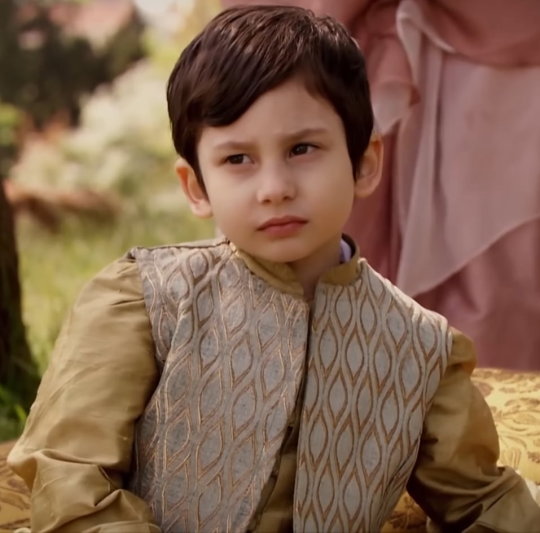





This gold and silver vest was first worn by Şehzade Mustafa in the first episode of the first season of Magnificent Century. It was worn again by Şehzade Mehmed in the nineteenth episode of the same season. The vest also appeared in the twelth episode of the second season among the belongings of the recently deceased Sultanzade Mehmed. Seventeen episodes later it was worn by Şehzade Bayezid. The vest is next seen on Nergisşah Sultan in the twenty-ninth episode of the third season. It is also worn by Osman, the son of Turahanoğlu Turgul Bey aka Atmaca, in the twelth episode of the fourth season.
Magnificent Century: Kösem used the vest twice in its first season on Şehzade Osman (later Sultan Osman II) and Şehzade Ibrahim (later Sultan Ibrahim) in the twelth and twenty-third episode, respectively.
#Muhteşem Yüzyıl#Muhteşem Yüzyıl: Kösem#Magnificent Century#Magnificent Century Kösem#Magnificent Century Kosem#period drama#costume drama#historical drama#Şehzade Mustafa#Sehzade Mustafa#Şehzade Mustafa (Son of Mahidevran)#Şehzade Mehmed#Sehzade Mehmed#Şehzade Mehmed (Son of Hürrem)#Sultanzade Mehmed#Sultanzade Mehmed (Son of Hatice)#Şehzade Bayezid#Sehzade Bayezid#Şehzade Bayezid (Son of Hürrem)#Nergisşah Sultan#Nergissah Sultan#Osman#Osman (Son of Atmaca)#Osman II#Şehzade Osman#Sehzade Osman#Şehzade Osman (Son of Mahfiruze)#Şehzade Ibrahim#Sehzade Ibrahim#Ibrahim I
5 notes
·
View notes
Text





This dark blue coat with a brown fur collar was first worn by Sultanzade Osman in the twenty-sixth episode of the second season of Magnificent Century. It is worn again twice in the fourth season, first by Şehzade Orhan in the thirteenth episode and then by Şehzade Abdullah in the eighteenth episode.
The coat was also used twice on Şehzade Osman (later Sultan Osman II) and Şehzade Ibrahim (later Sultan Ibrahim) in the fifteen and twenty-first episodes of first season of Magnificent Century: Kösem.
#Muhteşem Yüzyıl#Muhteşem Yüzyıl: Kösem#Magnificent Century Kösem#Magnificent Century#Magnificent Century Kosem#period drama#costume drama#historical drama#Sultanzade Osman#Sultanzade Osman (Son of Hatice)#Şehzade Orhan#Sehzade Orhan#Şehzade Orhan (Son of Şehzade Bayezid)#Şehzade Abdullah#Sehzade Abdullah#Şehzade Osman#Sehzade Osman#Şehzade Osman (Son of Mahfiruze)#Osman II#Şehzade Ibrahim#Sehzade Ibrahim#Şehzade Ibrahim (Son of Kösem)#Ibrahim I#reused costumes#recycled costumes
10 notes
·
View notes
Text



This blue and silver kaftan was first worn by Şehzade Selim (later Sultan Selim II) in the twenty-sixth episode of the fourth season of Magnificent Century.
The collar was removed before the kaftan was worn again by Şehzade Mustafa (later Sultan Mustafa I) in the twenty-second episode of the first season of Magnificent Century: Kösem. The kaftan underwent another major alteration before it appeared again on Şehzade Ibrahim (later Sultan Ibrahim) in the sixth episode of the second season.
#Muhteşem Yüzyıl#Muhteşem Yüzyıl: Kösem#Magnificent Century#Magnificent Century Kösem#Magnificent Century Kosem#period drama#costume drama#historical drama#Şehzade Selim#Sehzade Selim#Selim II#Şehzade Selim (Son of Hürrem)#Şehzade Mustafa#Mustafa I#Sehzade Mustafa#Şehzade Mustafa (Son of Halime)#Şehzade Ibrahim#Sehzade Ibrahim#Ibrahim I#Şehzade Ibrahim (Son of Kösem)#reused costumes#recycled costumes
4 notes
·
View notes
Text


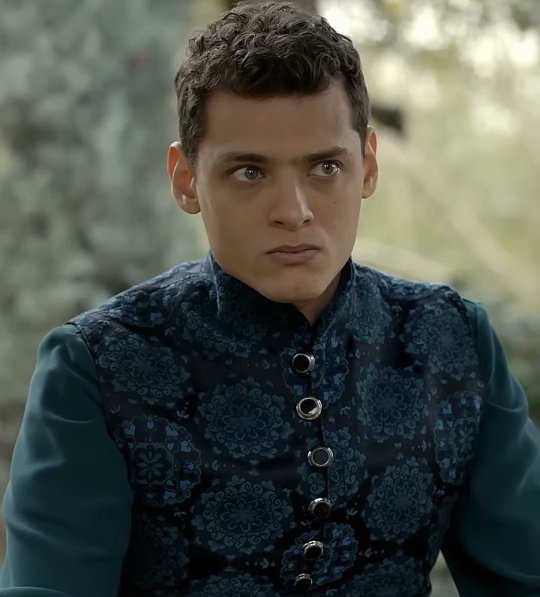
This grey and blue kaftan was first worn by Şehzade Mustafa in promotional material as well as the first episode of the third season of Magnificent Century.
It was next seen on Şehzade Mustafa (later Sultan Mustafa I) in the twenty-first episode of the first season of Magnificent Century: Kösem. The kaftan was also worn by Şehzade Ibrahim (later Sultan Ibrahim) in the first episode of the second season.
#Muhteşem Yüzyıl#Muhteşem Yüzyıl: Kösem#Magnificent Century#Magnificent Century Kösem#Magnificent Century Kosem#period drama#costume drama#historical drama#Şehzade Mustafa#Sehzade Mustafa#Mustafa I#Şehzade Mustafa (Son of Mahidevran)#Şehzade Mustafa (Son of Halime)#Şehzade Ibrahim#Sehzade Ibrahim#Ibrahim I#Şehzade Ibrahim (Son of Kösem)#reused costumes#recycled costumes
4 notes
·
View notes
Photo



This blue and golden outfit was first worn by Sultan Süleyman I in the second season of Magnificent Century.
It is worn again by Şehzade Osman in the first season of Magnificent Century: Kösem. Şehzade Ibrahim also wears it in the second season.
#Magnificent Century#Magnificent Century Kösem#Magnificent Century Kosem#Muhteşem Yüzyıl#Muhteşem Yüzyıl: Kösem#period drama#costume drama#historical drama#Sultan Süleyman#Sultan Suleyman#Süleyman I#Suleyman I#Şehzade Osman#Sehzade Osman#Şehzade Osman (Son of Mahfiruze)#Osman II#Şehzade Ibrahim#Sehzade Ibrahim#Ibrahim I#reused costumes#recycled costumes
16 notes
·
View notes
Text


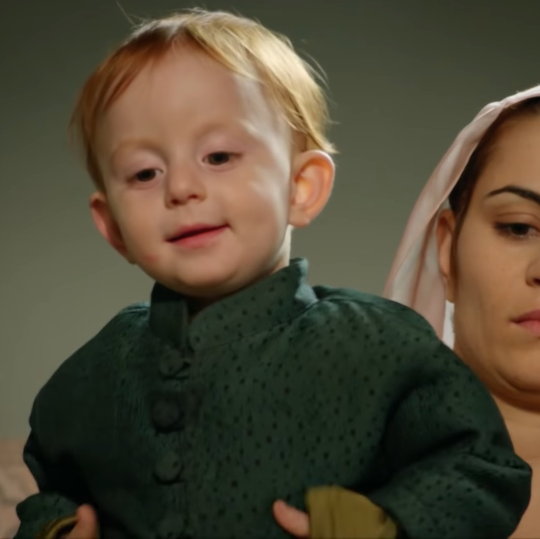




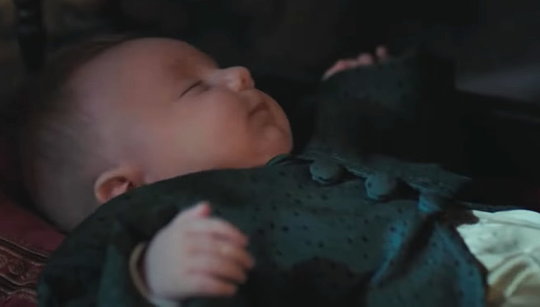
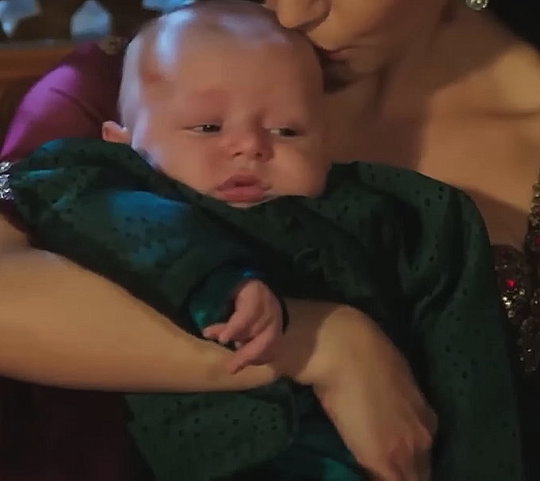
This green shirt with black dots was first worn by Şehzade Mehmed in the tenth episode of the first season of Magnificent Century. It was used again three times in the second season, first on Şehzade Bayezid in the fourteenth episode, then on Şehzade Selim (later Sultan Selim II) in the eighteenth episode and lastly on Şehzade Cihangir in the the twenty-ninth episode. The shirt was also worn twice in the fourth season by Şehzade Murad (later Sultan Murad III) and Şehzade Bayezid's son Mehmed in the eleventh and thirty-fourth episode, respectively.
Magnificent Century: Kösem used the shirt three times during its first season on Şehzade Osman (later Sultan Osman II), Şehzade Mehmed and Şehzade Ibrahim (later Sultan Ibrahim) in the fifteenth, twentieth and twenty-first episodes.
#Muhteşem Yüzyıl#Muhteşem Yüzyıl: Kösem#Magnificent Century#Magnificent Century Kösem#Magnificent Century Kosem#period drama#costume drama#historical drama#Şehzade Mehmed#Sehzade Mehmed#Şehzade Mehmed (Son of Hürrem)#Şehzade Bayezid#Sehzade Bayezid#Şehzade Bayezid (Son of Hürrem)#Şehzade Selim#Sehzade Selim#Selim II#Şehzade Selim (Son of Hürrem)#Şehzade Murad#Sehzade Murad#Şehzade Murad (Son of Nurbanu)#Murad III#Şehzade Mehmed (Son of Şehzade Bayezid)#Şehzade Osman#Sehzade Osman#Osman II#Şehzade Osman (Son of Mahfiruze)#Şehzade Mehmed (Son of Kösem)#Şehzade Ibrahim#Sehzade Ibrahim
17 notes
·
View notes
Text



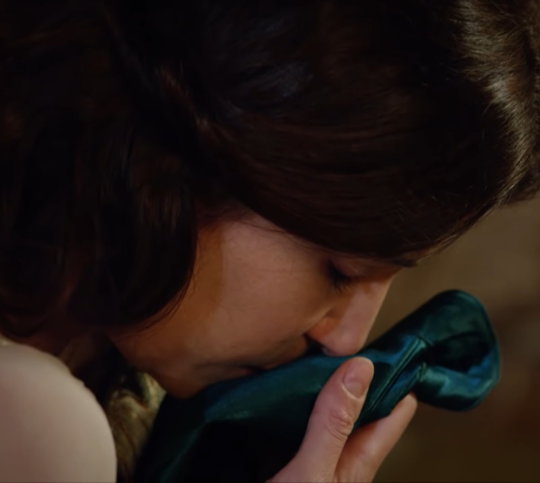





This teal blue shirt was in high usage during the run of Magnificent Century and its spin-off Magnificent Century: Kösem.
It first appeared in the ninth episode of the first season on Şehzade Mehmed. The shirt was used three times in the second season. First on Şehzade Bayezid in the third episode, then on Şehzade Selim in the ninth episode and lastly it lay among the clothes of the deceased Sultanzade Mehmed in the twelth episode. The shirt was then seen again on Şehzade Cihangir in the fourth episode of the third season. It was also worn by Mihrimah Sultan's son Sultanzade Osman in the thirty-fourth episode of the fourth season.
Magnificent Century: Kösem used the shirt three times in its first season, first on Şehzade Mehmed in the thirteenth episode, then on Şehzade Ibrahim (later Sultan Ibrahim) in the twenty-first episode and lastly on Sultan Osman II's son Şehzade Mustafa.
#Muhteşem Yüzyıl#Muhteşem Yüzyıl: Kösem#Magnificent Century#Magnificent Century Kösem#Magnificent Century Kosem#period drama#costume drama#historical drama#Şehzade Mehmed#Sehzade Mehmed#Şehzade Mehmed (Son of Hürrem)#Şehzade Mehmed (Son of Kösem)#Şehzade Bayezid#Sehzade Bayezid#Şehzade Bayezid (Son of Hürrem)#Şehzade Selim#Selim II#Sehzade Selim#Şehzade Selim (Son of Hürrem)#Şehzade Cihangir#Sehzade Cihangir#Sultanzade Mehmed#Sultanzade Mehmed (Son of Hatice)#Sultanzade Osman#Sultanzade Osman (Son of Mihrimah)#Şehzade Ibrahim#Sehzade Ibrahim#Ibrahim I#Şehzade Mustafa#Sehzade Mustafa
13 notes
·
View notes
Text






This silver and grey kaftan was first worn by Şehzade Bayezid in the thirty-eighth episode of the second season of Magnificent Century. It was used twice in the third season, first on Şehzade Selim in the second episode and then on Şehzade Cihangir in the eleventh episode. The kaftan was also worn by Şehzade Mustafa's son Mehmed in the eighteenth episode of the fourth season.
The second season of Magnificent Century: Kösem saw the kaftan appear twice, first on Sultan Murad IV's son Ahmed in the ninth episode and then on Sultan Ibrahim's son Osman in the twenty-seventh episode.
#Muhteşem Yüzyıl#Muhteşem Yüzyıl: Kösem#Magnificent Century#Magnificent Century Kösem#Magnificent Century Kosem#period drama#costume drama#historical drama#Şehzade Bayezid#Sehzade Bayezid#Şehzade Bayezid (Son of Hürrem)#Şehzade Selim#Sehzade Selim#Selim II#Şehzade Selim (Son of Hürrem)#Şehzade Cihangir#Sehzade Cihangir#Şehzade Mehmed#Sehzade Mehmed#Şehzade Mehmed (Son of Mihrünnisa)#Şehzade Ahmed#Şehzade Osman (Son of Zarife)#Sehzade Ahmed#Şehzade Osman#Sehzade Osman#Şehzade Ahmed (Son of Ayşe)#recycled costumes#reused costumes
12 notes
·
View notes